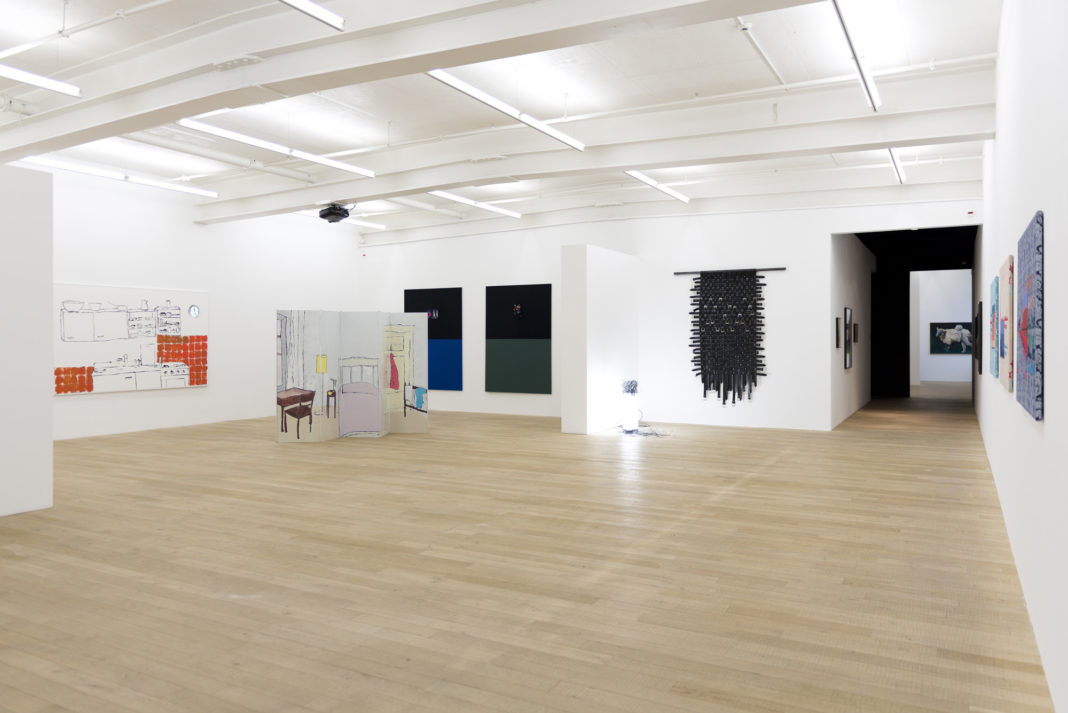Galerie Peter Kilchmann is presenting Group Show/New Works. The exhibition unites ten Swiss as well as international artistic positions, presenting the public a challenging visual experience with diverse works in various media such as painting, drawing, sculpture, photography and video. Through an interesting array of parallel and controversial topics, the exhibition attempts to depict the strong individual approaches of each artist, while balancing their ways and perceptions. Inherent to all artists presented is the vigor in which they communicate their standpoints and draw the observer to engage with subject matter. Jan. 20 – March 17, 2018, Galerie Peter Kilchmann, Zurich.
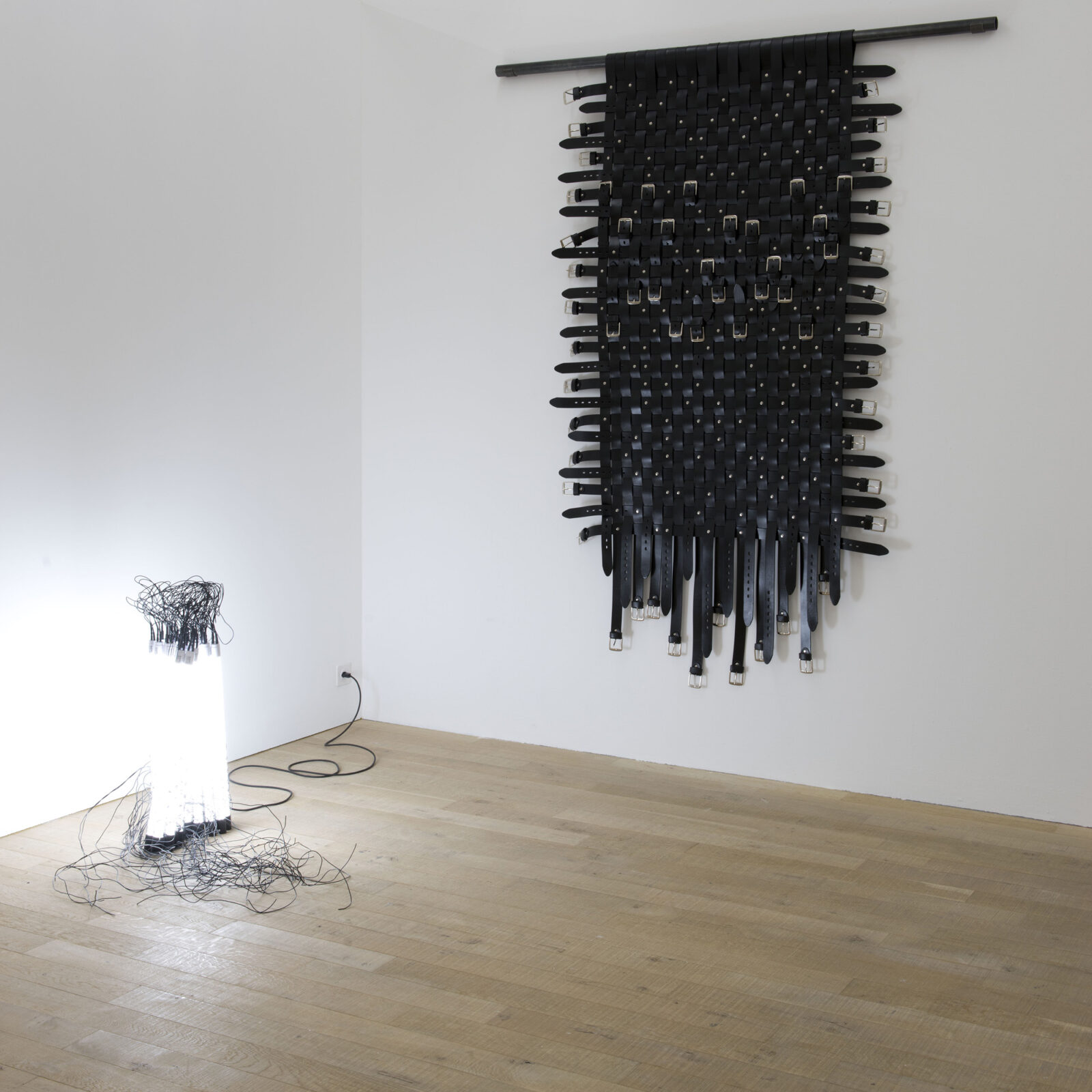 For her ongoing series Arts, Crafts and Facts, first shown at the Venice Biennial in 2015, Maja Bajevic (*1967, Sarajevo, Bosnia and Herzegowina) works on playfully patterned cotton fabrics embroidered with charts of fluctuating discrepancies between average income, prices of commodities, taxes and profit. Three new works of this series are being presented in the show.
For her ongoing series Arts, Crafts and Facts, first shown at the Venice Biennial in 2015, Maja Bajevic (*1967, Sarajevo, Bosnia and Herzegowina) works on playfully patterned cotton fabrics embroidered with charts of fluctuating discrepancies between average income, prices of commodities, taxes and profit. Three new works of this series are being presented in the show.
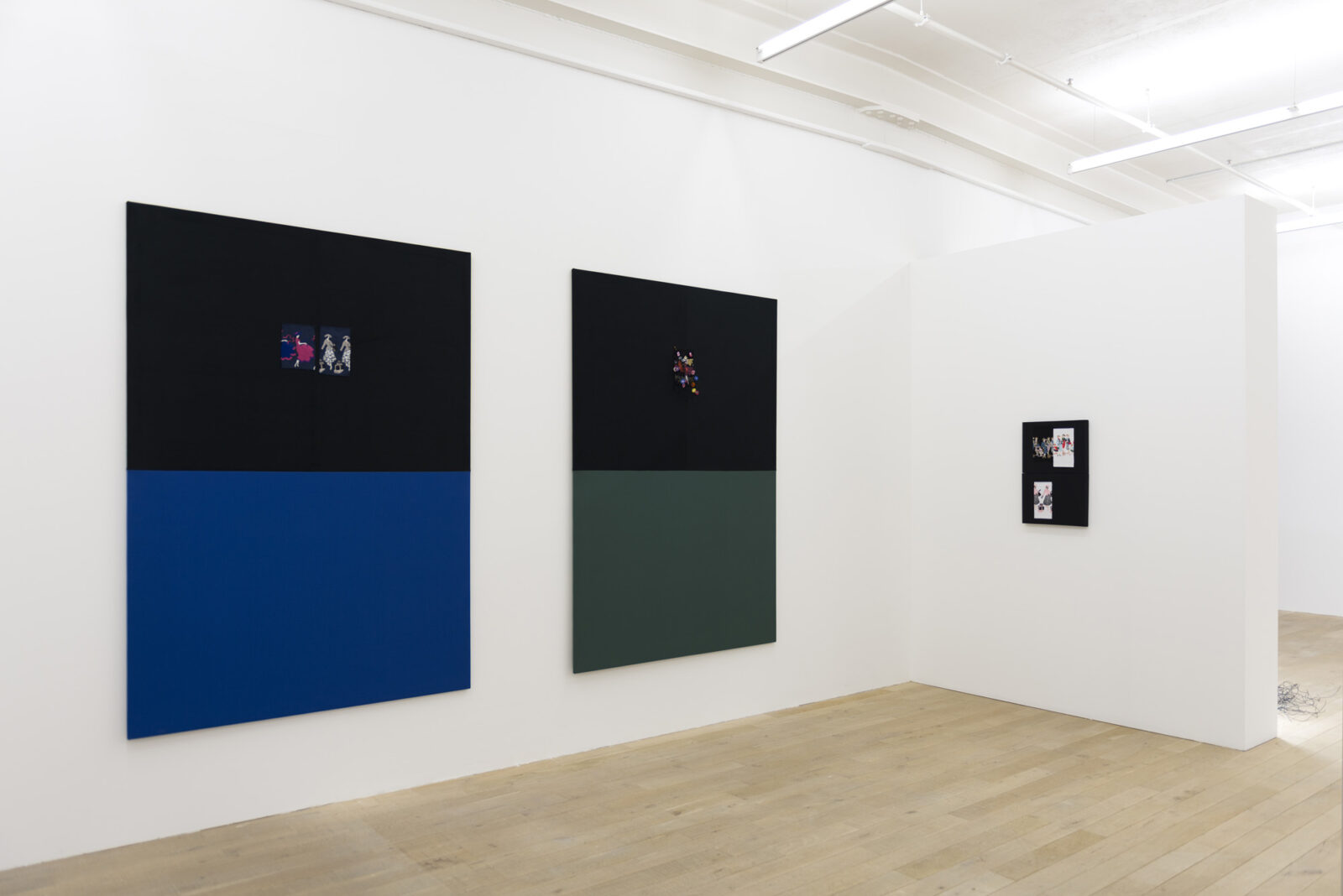 Marc Bauer (*1975, Geneva, Switzerland), invites the visitor to a melancholy journey, he realized in London during an artist residency in 2017. Several medium and small-scale drawings, as well as two paintings from the series “London Walks” show specific settings of the English capital discovered by the artist during extensive wanderings, each of them acting as an intimate journal entry.
Marc Bauer (*1975, Geneva, Switzerland), invites the visitor to a melancholy journey, he realized in London during an artist residency in 2017. Several medium and small-scale drawings, as well as two paintings from the series “London Walks” show specific settings of the English capital discovered by the artist during extensive wanderings, each of them acting as an intimate journal entry.
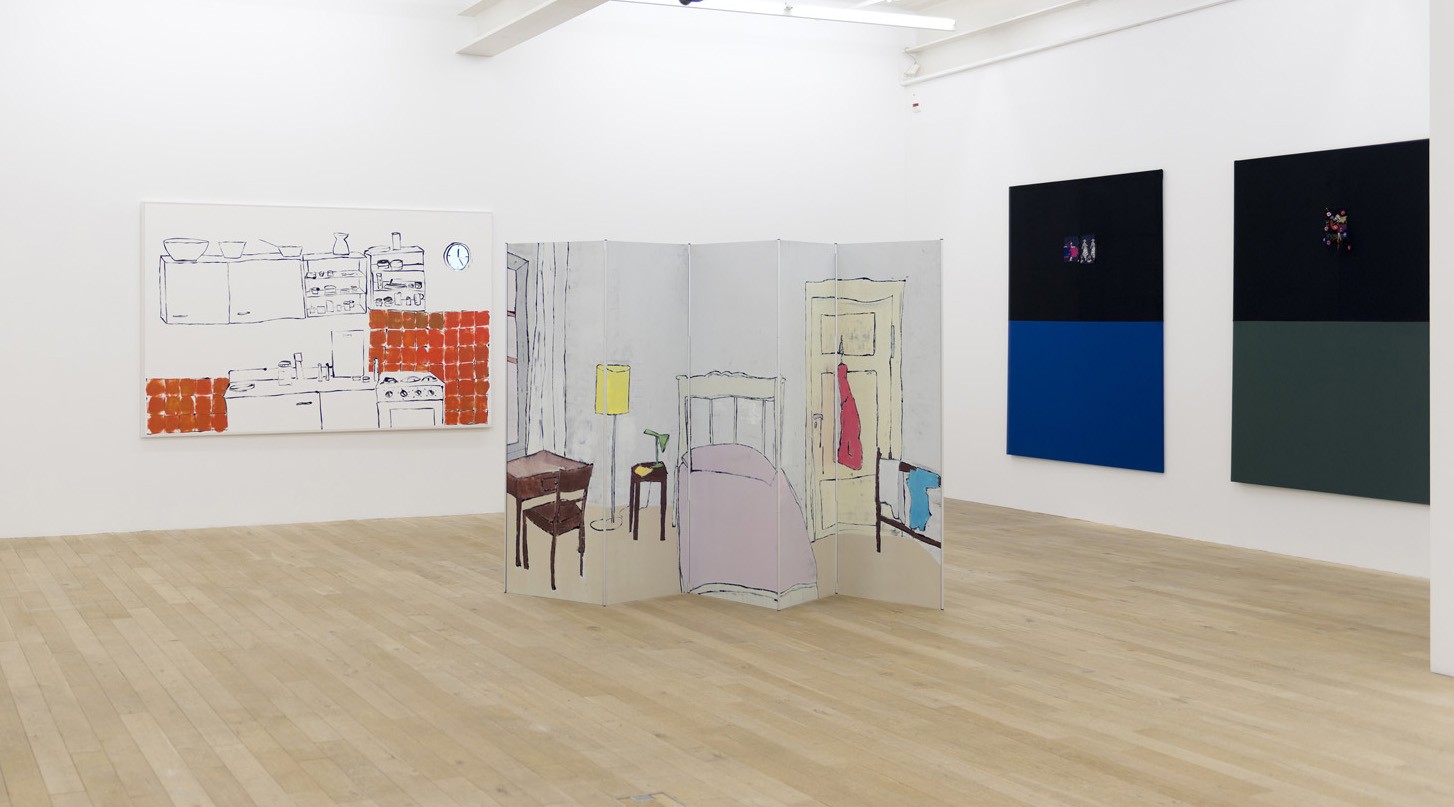
Marc-Antoine Fehr (*1953, Zurich, Switzerland) presents two new paintings in oil on canvas. The smaller work, 103 x 132 cm, features the recurrent motif of an infant with a sheep, which can be read as the metaphor for innocence. In his second painting, 132 x 162 cm, one encounters a coated female torso holding two porcelain cups in her hands, painted in strong black and blue contrast. Due to their reduced and muted color palette, Fehr‘s works often appear as under a nostalgic dream-like patina.
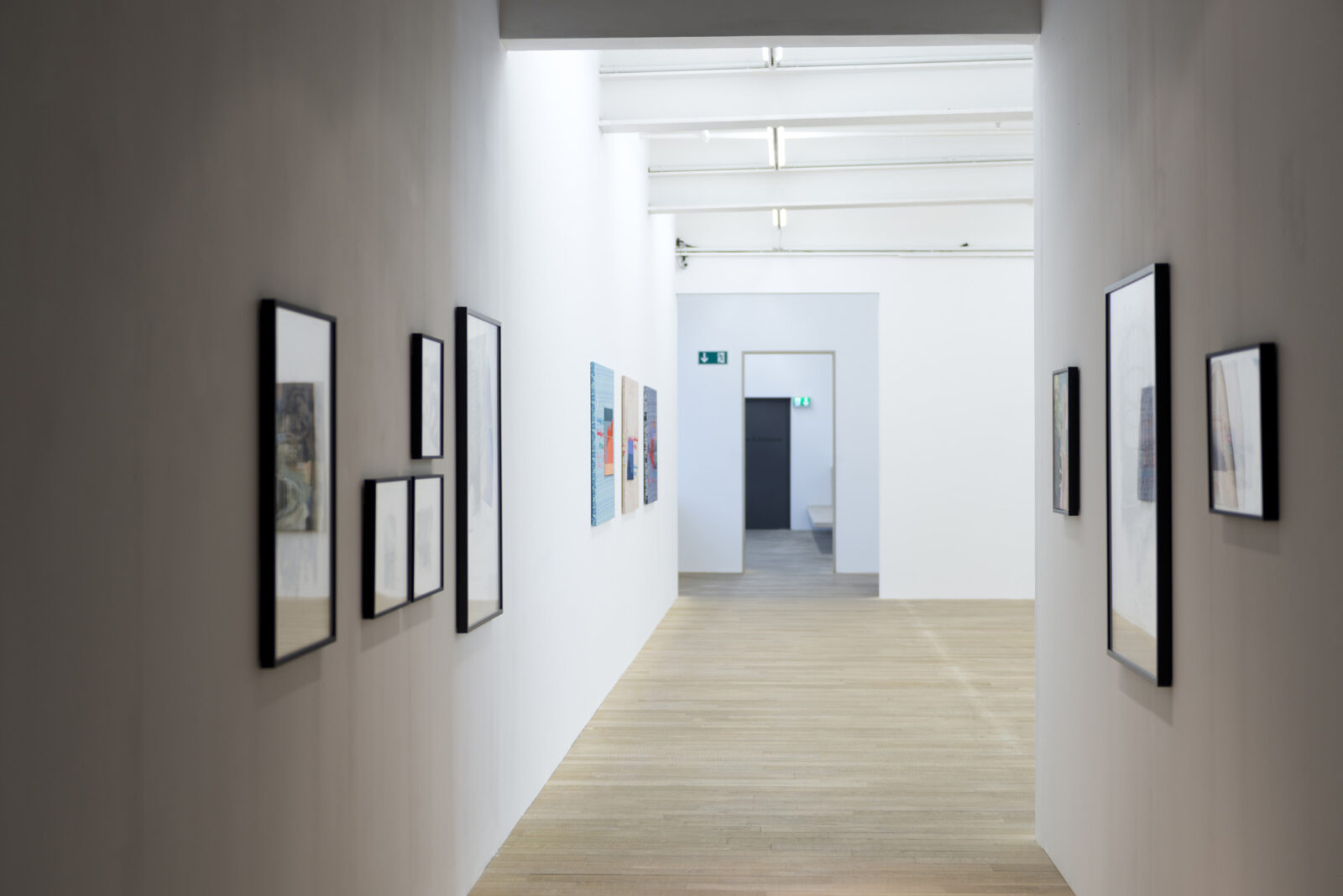
In search of alternative production options Tobias Kaspar (*1984, Basel, Switzerland) approaches the traditional craft of embroidery. His new works are made of delicately mounted fabrics from a Swiss manufacturer for pret-aporter and haute couture collections with whom Kaspar already collaborated for his reflector-series. The twocolored fabrics fascinate through their smooth, soft and distinct surfaces on which meticulously crafted embroideries have been sewed. The motives are doll-like female figures elegantly dressed in vintage style, surrounded by their sophisticated urban environment.
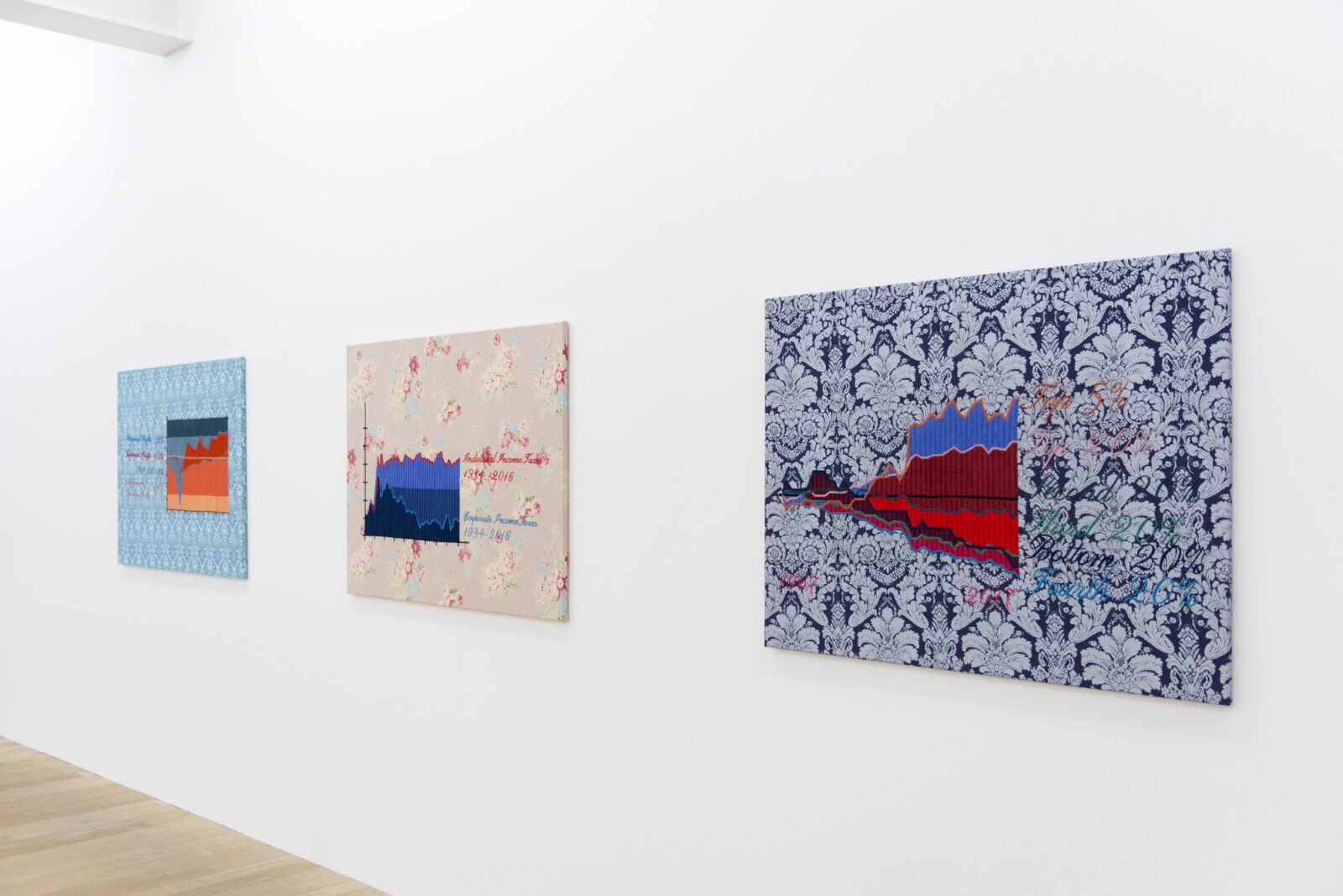
In her new works Prima Cucina und Celine´s Room Zilla Leutenegger (*1968, Chur, Switzerland) shows how a mere interior can become the fascinating protagonist of a painting, as in her series of monotypes from 2017. A fivepart folding screen standing upright within the exhibition space invites the observer through its bold contour lines and laminar pastel shades to explore the architecture of a harmoniously furnished, fictional bedroom. In Leutenegger‘s large-scale composition Prima Cucina the reduced, yet characteristic details of a kitchen‘s cabinets surrounded by red tiles that in realistic dimensions appear to be a window to an adjoining room.
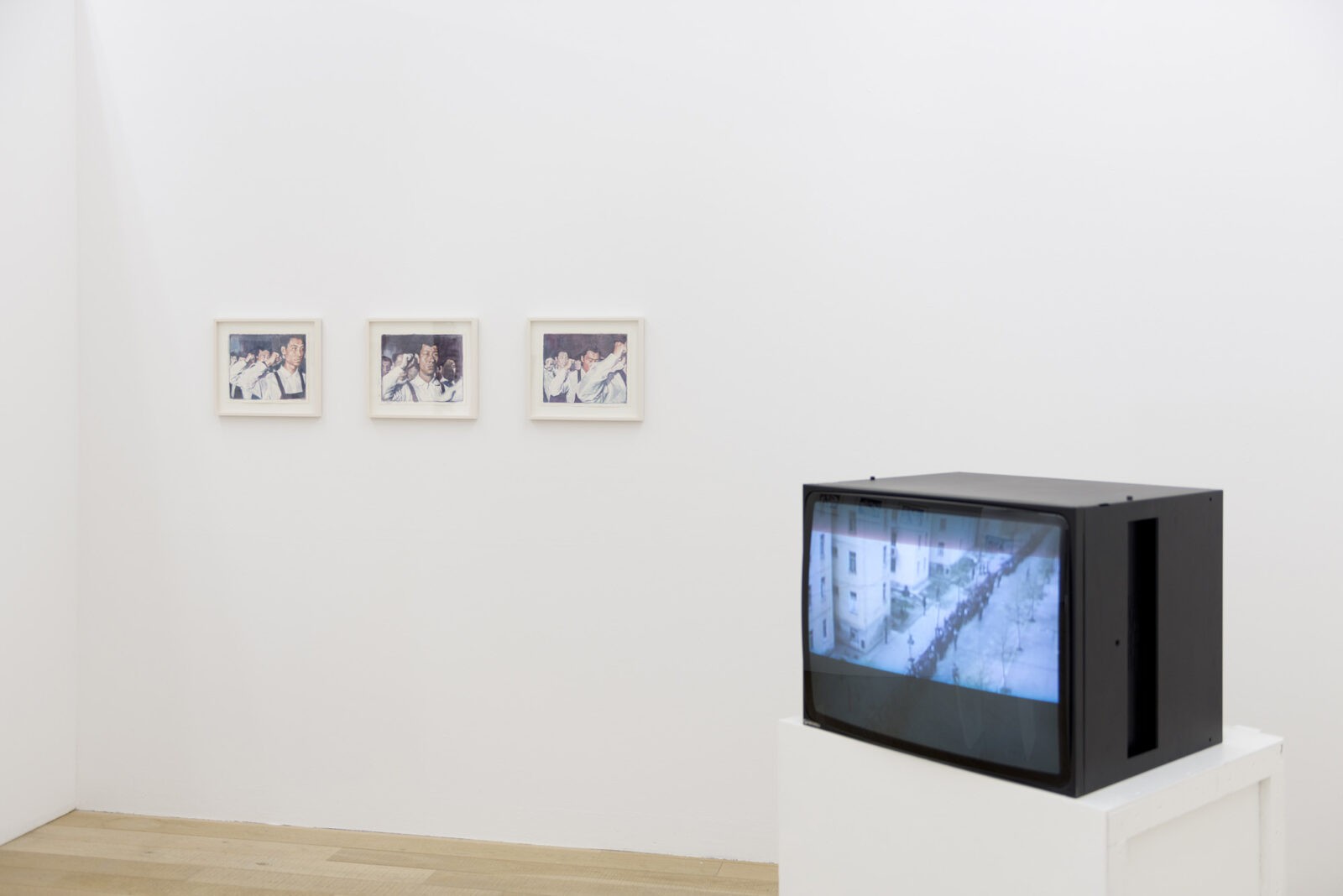 The use of fabrics and other materials that have been in contact to or are connected to dead bodies are an important component of Teresa Margolles‘ (*1963, Culiacán, Mexico) artistic practice. Her sculpture Frazada features a traditionally crafted cloth from La Paz, Bolivia, that was used to cover the body of a murdered woman. In a public performance, the cloth was mounted on a thin metal structure in the style of self-made sunshades that are seen at Bolivian street stalls. For the small-scaled photographic work Cine México Margolles had the words “So that they/ you shall learn to respect” in Spanish placed and displayed in the canopy of an abandoned cinema. In Mexico, so called “Narcomessages” are left by the hitmen of drug lords over the bodies of their murdered victims.
The use of fabrics and other materials that have been in contact to or are connected to dead bodies are an important component of Teresa Margolles‘ (*1963, Culiacán, Mexico) artistic practice. Her sculpture Frazada features a traditionally crafted cloth from La Paz, Bolivia, that was used to cover the body of a murdered woman. In a public performance, the cloth was mounted on a thin metal structure in the style of self-made sunshades that are seen at Bolivian street stalls. For the small-scaled photographic work Cine México Margolles had the words “So that they/ you shall learn to respect” in Spanish placed and displayed in the canopy of an abandoned cinema. In Mexico, so called “Narcomessages” are left by the hitmen of drug lords over the bodies of their murdered victims.
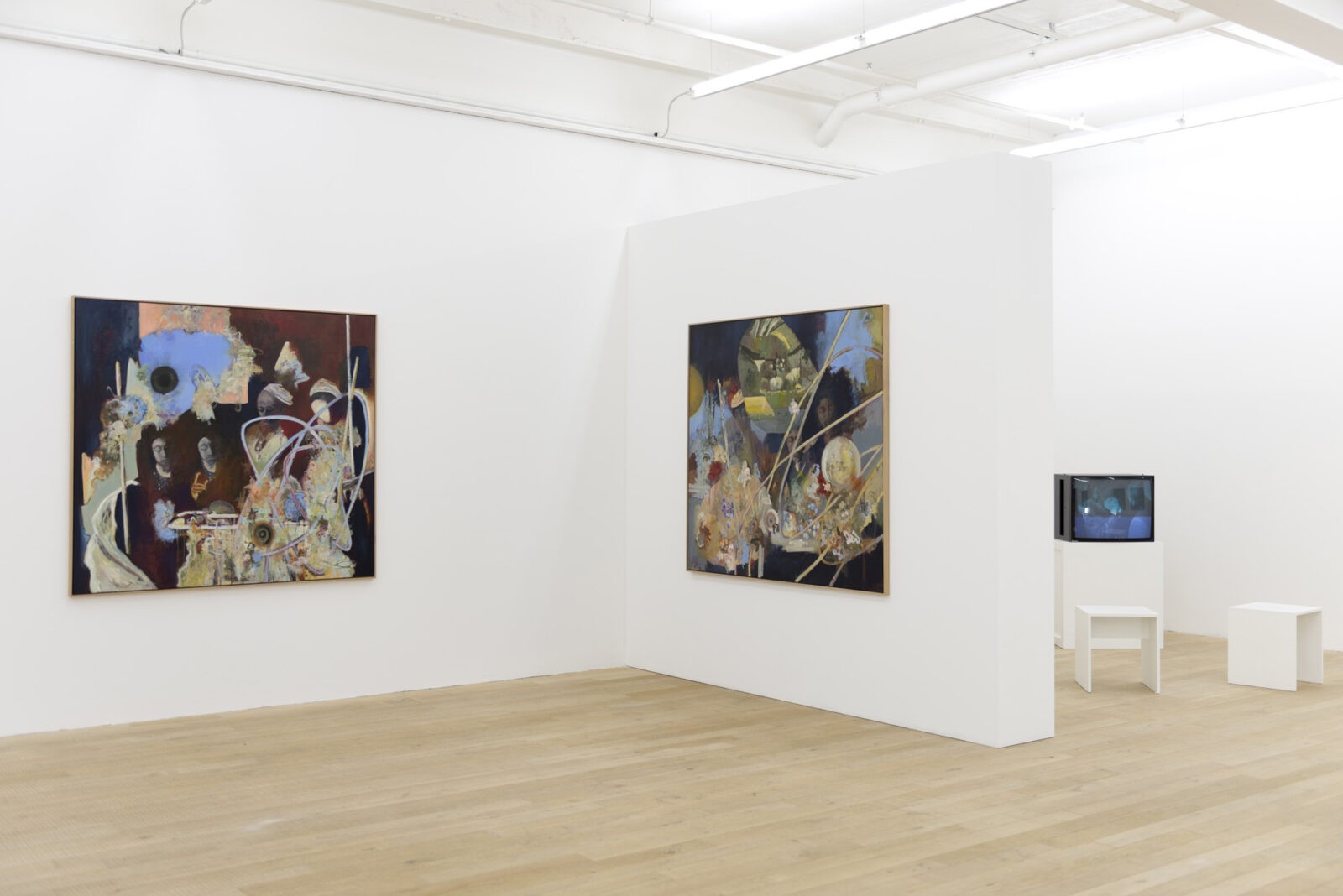 For his new video-work Interregnum Adrian Paci (*1969, Shkodra, Albania) has collected film fragments that document the funerals of communist dictators. The assembled and cut scenes shift from endless processions to strong close-ups of the mourning supporters. From each face emits the tragic sorrow over the loss of their leader, whose passing also means a distinctive cut within the power of the system. A system that turns the individual into an instrument of the government body, that in mutual conviction of the mass follows the ideologies of the regime.
For his new video-work Interregnum Adrian Paci (*1969, Shkodra, Albania) has collected film fragments that document the funerals of communist dictators. The assembled and cut scenes shift from endless processions to strong close-ups of the mourning supporters. From each face emits the tragic sorrow over the loss of their leader, whose passing also means a distinctive cut within the power of the system. A system that turns the individual into an instrument of the government body, that in mutual conviction of the mass follows the ideologies of the regime.
Uwe Wittwer (*1954, Zurich, Switzerland) presents two new large-scale compositions entitled At the Table after Caravaggio (Am Tisch nach Caravaggio), 148 x 163 cm. In both paintings, based on the same original, Wittwer challenges the reference and carves out its pictorial potential by engaging in a complex alteration process. Single elements are repeatedly painted over with pastel shades, brought to the fore as floral details or artifacts or even doubled, as in the case of the central figure of the Christ. Other areas are obscured by black patches, shadows or the erasure of a detail and cannot be easily explained, inspiring the observer to question what has been seen.






